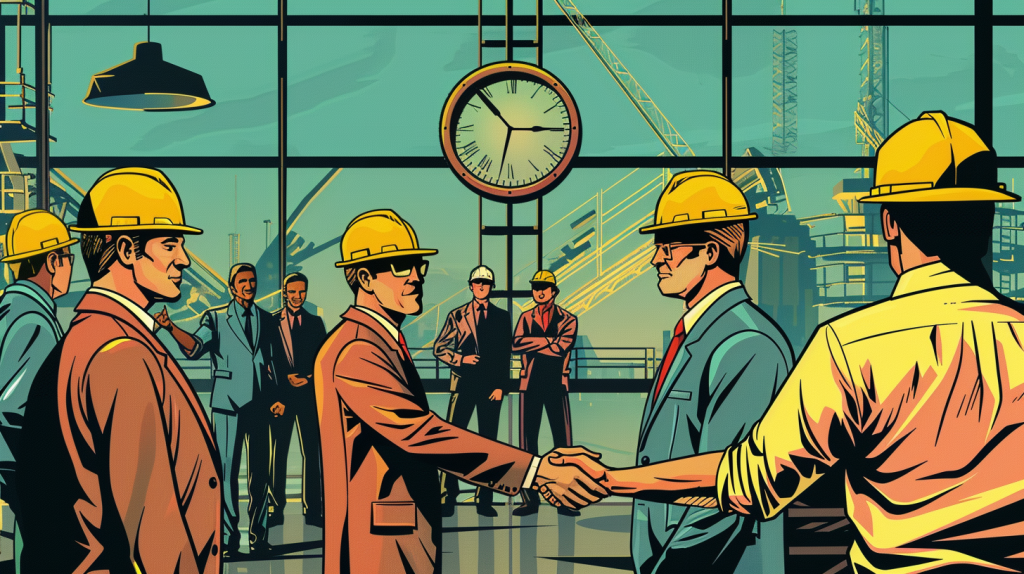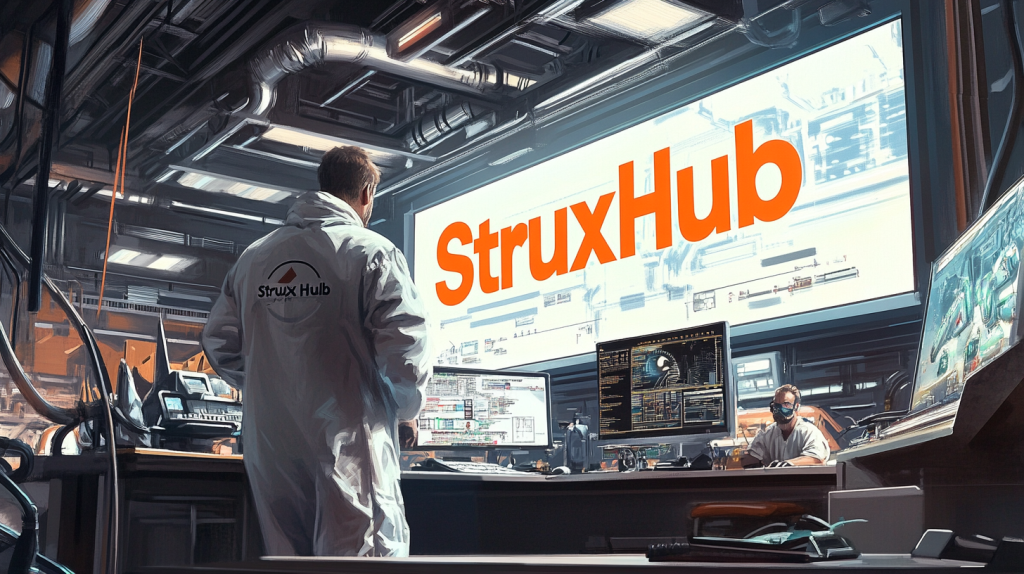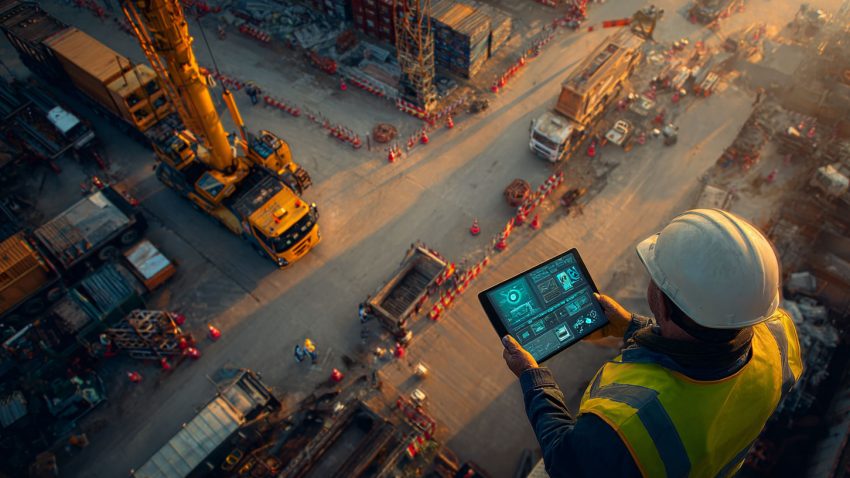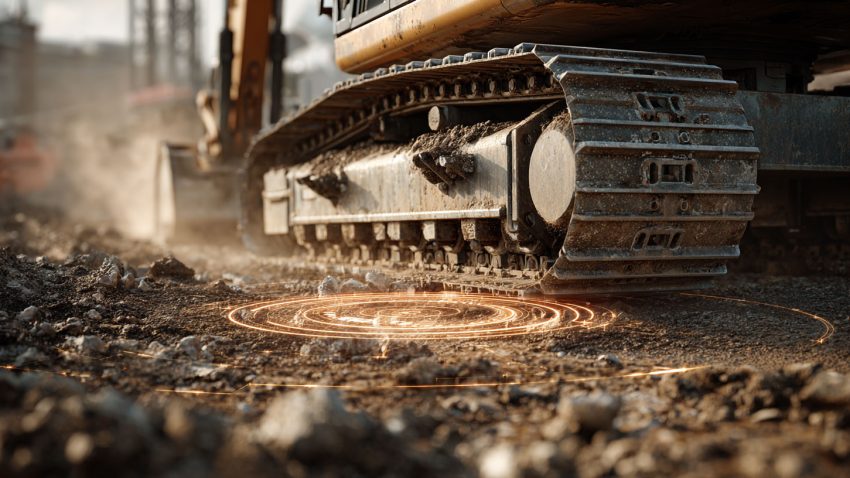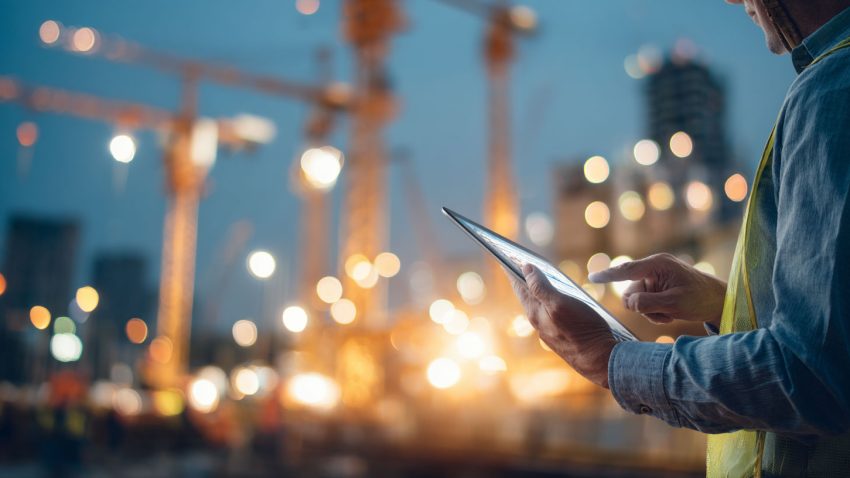Best Guide to AI in Construction Project Management: How Smart Tools Are Improving Construction Site Productivity
Table of Contents:
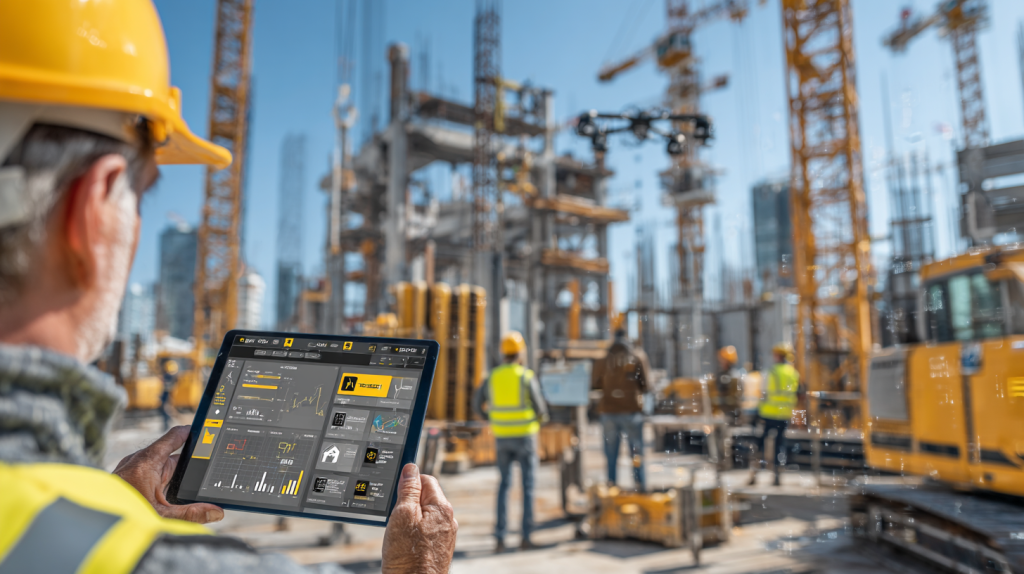
How Is AI Changing Construction Project Management in Real Time?
Artificial intelligence is no longer a futuristic concept in construction—it’s actively transforming how projects are managed every day. From predicting delays to optimizing schedules and enhancing communication, AI-powered tools are helping teams gain deeper insight into every stage of a build. Instead of waiting for reports to be filled out manually or problems to arise unexpectedly, project managers can now use AI to receive real-time alerts, identify inefficiencies early, and take corrective action immediately. This shift toward automation and predictive intelligence isn’t just convenient—it’s redefining productivity at every level of construction.
AI tools are especially powerful in environments where project complexity and timelines are constantly shifting. Whether managing subcontractors across a multi-phase commercial project or overseeing jobsite safety inspections, AI gives superintendents and PMs a smart way to process massive amounts of field data. These tools can recognize patterns across hundreds of jobsite activities and make intelligent suggestions, such as adjusting resource allocations, updating timelines, or flagging documentation gaps. In short, AI enables leaders to act proactively rather than reactively—saving time, money, and materials in the process.
Top Features
- Real-time analysis of schedule data, material usage, and task progress
- Predictive insights for identifying delays, weather impacts, or labor shortages
- AI-assisted reporting and documentation that saves time on manual data entry
- Integration with BIM, ERP, and project management tools for seamless workflows
Top Benefits
- Faster decision-making with real-time, AI-generated recommendations
- Reduced downtime through early detection of risks or bottlenecks
- Improved coordination between field and office teams
- Less time spent manually updating logs, RFIs, and daily reports
Best Practices
- Use AI tools that connect with your existing project management software
- Train teams to rely on AI dashboards for early alerts and decision support
- Prioritize mobile apps that offer real-time data syncing from the field
- Review AI-generated reports weekly to adjust project plans as needed
AI is not here to replace human oversight—it’s here to enhance it. For project managers seeking to stay ahead of issues and maintain control over complex timelines, AI provides a powerful, scalable way to boost jobsite productivity without sacrificing quality or safety.
What Are the Key AI Tools Used in Modern Construction Project Management?
AI isn’t a single tool—it’s a network of intelligent technologies reshaping how construction teams operate. The most commonly used AI tools in construction project management include machine learning-powered scheduling software, image recognition for jobsite monitoring, and natural language processing for automating documentation. These tools can process massive amounts of data from daily field operations and surface insights that would be difficult or impossible to catch manually.
Popular solutions include predictive scheduling engines that adjust timelines based on real-time field input, safety monitoring systems that analyze photos for PPE compliance, and smart assistants that auto-fill reports, RFIs, and checklists. AI is also enhancing quality control by flagging discrepancies in progress photos or identifying supply chain risks in advance. With cloud-based integrations and mobile-ready platforms, these tools are now more accessible to field teams, making AI an everyday part of project execution rather than a luxury reserved for large firms.
Top Features
- Machine learning models that forecast schedule delays or resource shortages
- AI photo analysis to monitor safety compliance and work quality
- NLP tools that auto-fill or summarize field documentation
- Integrated dashboards that track real-time crew performance and material status
Top Benefits
- Better risk management through real-time alerts and proactive planning
- Higher quality builds through smarter inspection and issue tracking
- Streamlined documentation processes that reduce admin time
- Improved resource allocation based on predictive analytics
Best Practices
- Choose platforms that combine multiple AI functions in one dashboard
- Ensure mobile accessibility so field teams can interact with tools on-site
- Use AI photo analysis to support both safety and quality control
- Automate daily logs and reports to save time and reduce errors
The key to success with AI tools is integration and usability. When smart technology fits seamlessly into existing workflows, it becomes an invisible partner—helping teams work faster, safer, and smarter.
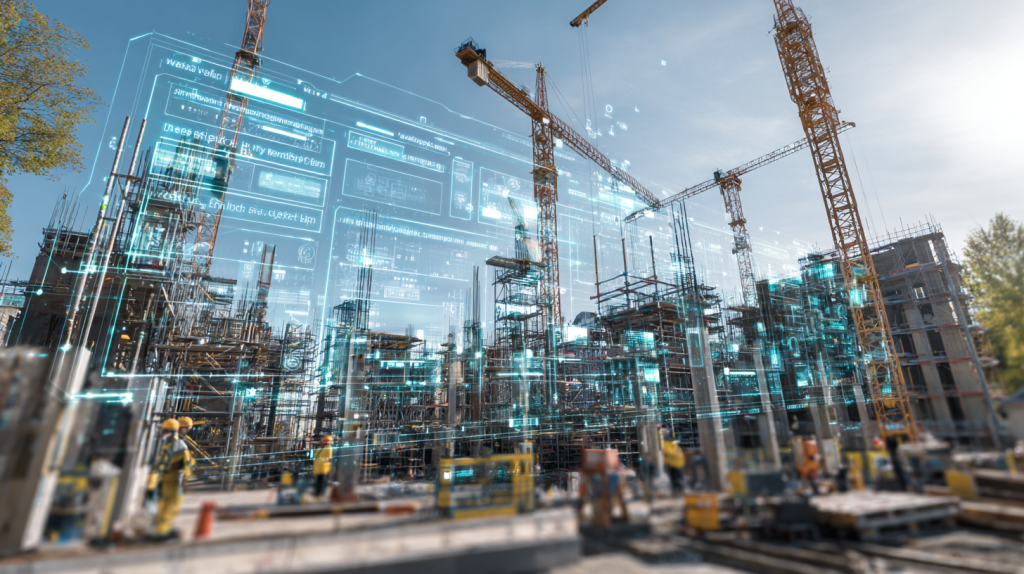
How Can AI Help Prevent Delays and Budget Overruns in Construction Projects?
Schedule delays and budget overruns are two of the most painful challenges in construction. AI offers a new way to get ahead of these issues by giving project managers the ability to see patterns, predict risks, and make smarter decisions in real time. Instead of relying on outdated spreadsheets or manual progress tracking, AI tools continuously gather jobsite data and flag any signs of trouble—whether it’s a potential delay, a misallocation of labor, or an unexpected cost driver.
For example, AI can track real-time weather impacts and suggest changes to the schedule or crew assignments. It can also analyze historical data across similar projects to predict where cost overruns are likely to happen, allowing managers to adjust bids or contracts before problems arise. Combined with automated alerts, these tools give superintendents an early warning system to keep jobs on track and under budget—without spending hours sifting through reports.
Top Features
- Predictive algorithms for cost and schedule forecasting
- Real-time monitoring of progress vs. baseline milestones
- Alerts for scope creep, resource conflicts, or change order risks
- Historical data analysis for smarter bidding and cost estimation
Top Benefits
- Fewer project delays through early risk detection and corrective action
- Better budget control thanks to AI-driven financial forecasting
- Increased transparency with real-time dashboards for stakeholders
- More accurate pre-construction planning based on past performance
Best Practices
- Set up AI alerts for all critical path and budget-sensitive milestones
- Use forecasting tools during pre-con to build realistic timelines and budgets
- Track daily labor and material usage for variance detection
- Involve finance teams early so budget insights can shape decisions
AI transforms risk management into a real-time practice instead of a reactive one. With better visibility into performance metrics and risk indicators, project managers gain control over the factors that cause the most pain—delays and cost overruns.
Related Articles:
Best Guide to Construction Management Software
The Best Guide to Delivery Management Systems (DMS) for Commercial Construction
How Does AI Improve Communication Between Field Teams and Office Staff?
Miscommunication between field crews and office teams has long been a source of costly errors and rework. AI is now helping bridge that gap by syncing updates, automating reporting, and delivering actionable insights to the right people in real time. Whether it’s a superintendent in the field capturing photos or a project manager at headquarters reviewing schedules, AI-powered tools ensure everyone stays aligned without endless phone calls or email chains.
Natural language processing can auto-generate summaries of daily logs and convert voice notes into structured updates. Visual AI tools can scan photos or video to detect issues before they’re manually flagged. And automated alerts can push time-sensitive updates to stakeholders the moment conditions change. With AI managing the flow of information, field and office teams can focus more on decisions—and less on chasing data.
Top Features
- Automated syncing of jobsite updates to project dashboards
- AI-generated summaries of daily reports, RFIs, and progress photos
- Voice-to-text tools for field data capture and documentation
- Smart alerts triggered by on-site conditions or delays
Top Benefits
- Less time wasted on redundant status meetings or manual updates
- Clearer visibility for PMs, owners, and execs into field operations
- Higher field productivity with simplified mobile reporting
- Better documentation for compliance, inspections, and accountability
Best Practices
- Equip field crews with mobile AI tools that require minimal input
- Use AI summaries in daily huddles and stakeholder updates
- Set up rules-based alerts to notify teams of critical status changes
- Make dashboards available to both field and office teams for transparency
By giving both field and office teams real-time access to the same AI-curated insights, communication becomes seamless—leading to fewer misunderstandings, faster decisions, and stronger team collaboration.
How Is AI Used for Safety Monitoring and Compliance Tracking?
Safety remains a top priority on any jobsite, but traditional methods of monitoring can be reactive, inconsistent, or incomplete. AI is now enabling proactive safety management by continuously analyzing jobsite visuals, behavior patterns, and task data. It flags issues automatically—before they become hazards—and helps teams maintain compliance without relying solely on manual observation or paper checklists.
AI-powered cameras and photo recognition tools can identify missing PPE, unsafe worker behavior, or unauthorized jobsite access. Other tools scan reports for gaps in inspections or track trends in incident logs to uncover recurring risks. With AI, safety oversight becomes faster, more accurate, and easier to manage at scale. These tools don’t just improve outcomes—they help create a culture of continuous awareness.
Top Features
- Visual AI that scans for PPE violations and unsafe behavior
- Incident trend analysis across teams, projects, or jobsite types
- Automated safety checklists tied to real-time activity logs
- Compliance reporting tools that track regulatory readiness
Top Benefits
- Stronger safety outcomes with real-time visual monitoring
- Reduced risk of violations and fines due to consistent tracking
- Less reliance on manual inspections or outdated paper forms
- Higher crew accountability with clear records and alerts
Best Practices
- Implement AI camera systems at key access points and zones
- Integrate safety data into daily field logs and performance dashboards
- Review AI-generated safety reports weekly to adjust training or protocols
- Use AI tools as part of onboarding for safety education and reminders
With AI as a second set of eyes on the jobsite, safety becomes a proactive, data-driven process—one that supports crews while reducing liability for project managers and owners.
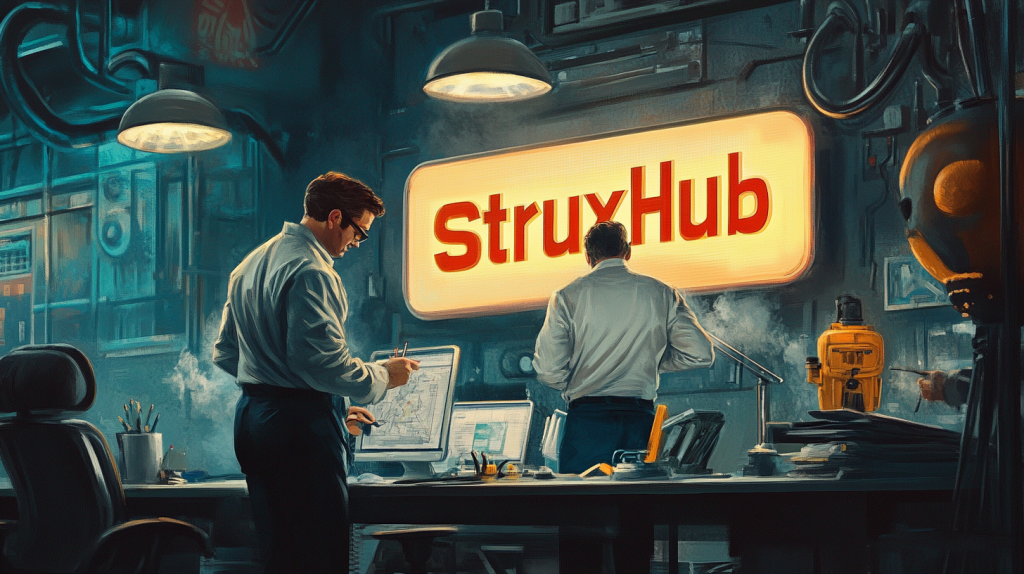
StruxHub
Experience the power of StruxHub today and witness firsthand how it can revolutionize your construction operations.
How Does AI Support Smarter Resource Allocation and Crew Productivity?
Resource allocation in construction has always been a complex balancing act—matching labor, equipment, and materials with the needs of a fast-moving jobsite. With AI, this process becomes more precise, data-driven, and responsive. Rather than relying on static schedules or guesswork, project managers can now use AI tools to adjust crew assignments and material deliveries in real time based on actual site conditions and performance trends.
AI-driven dashboards can analyze how long tasks are taking, which crews are hitting or missing their targets, and whether materials are arriving too early (causing congestion) or too late (causing delays). These systems don’t just track what’s happening—they learn from it, helping teams predict future needs and adjust plans proactively. As a result, resources are used more efficiently, productivity increases, and costly rework or idle time is reduced.
This level of smart resource planning is especially helpful on large or multi-phase projects, where delays in one area can create ripple effects across the jobsite. AI helps identify those friction points before they grow, keeping labor and logistics optimized across all teams and trades.
Top Features
- Real-time task tracking tied to labor and material usage
- Predictive models that suggest optimal crew sizes per task
- Equipment and asset monitoring through IoT-integrated AI tools
- Visual dashboards to balance workloads across subcontractors
Top Benefits
- Reduced crew idle time and improved labor productivity
- Fewer material delays and less over-ordering or under-utilization
- Enhanced visibility into bottlenecks or underperforming teams
- More accurate forecasting for future phases and bidding
Best Practices
- Use AI tools that sync with your scheduling and resource platforms
- Track daily productivity per crew and adjust assignments proactively
- Monitor equipment usage to reduce downtime or misplacement
- Review crew performance data weekly to plan labor needs accurately
With AI guiding resource allocation and labor planning, construction teams can get more done with less waste—improving margins while keeping field operations tightly aligned with project goals.
How StruxHub Can Support AI-Powered Construction Project Management
StruxHub is designed to complement and support the evolving role of AI in construction project management. While StruxHub doesn’t directly connect to hardware devices or AI vision systems, it serves as a powerful control center for field coordination, communication, and real-time data organization.
By streamlining processes like RFIs, daily logs, document sharing, and subcontractor task tracking, StruxHub reduces the friction between AI insights and field execution. Our intuitive interface ensures that your team can access and act on job-critical information without tech overwhelm or wasted steps. Whether your project leverages AI-driven scheduling, safety, or resource management, StruxHub is the platform that brings it all together into a centralized, collaborative environment.
If your team is ready to integrate AI into your workflows while improving field productivity and communication, StruxHub can help turn smart data into smarter results—without adding complexity to your tech stack.
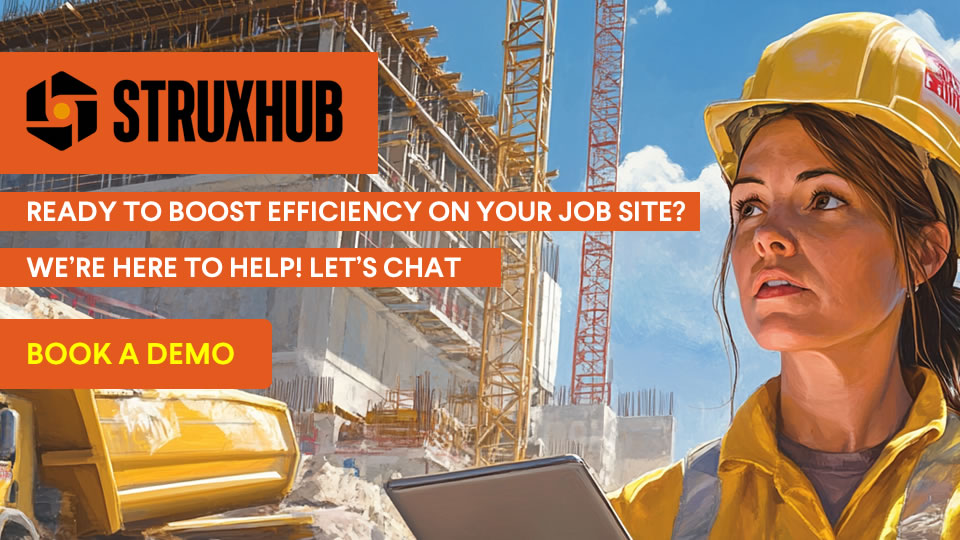
FAQ
How is AI used in construction project management today?
AI is used in construction project management to improve decision-making, enhance communication, and automate time-consuming tasks. One of the most common applications is predictive scheduling, where AI analyzes current progress against past project data to forecast delays before they occur. This allows project managers to adjust resources and timelines proactively instead of reacting after problems escalate.
AI is also used for photo recognition, allowing jobsite images to be scanned for safety violations or quality issues like missing PPE or incorrect installations. NLP (natural language processing) automates documentation by generating daily reports, transcribing field notes, and summarizing meeting takeaways. These functions significantly reduce administrative burden for both field teams and office staff.
Another major area of impact is real-time analytics. AI dashboards help teams track progress, identify inefficiencies, and generate alerts when field performance deviates from plan. These insights are often integrated into platforms like BIM or ERP systems to ensure continuity across departments.
Overall, AI helps construction professionals make faster, smarter decisions while improving safety, reducing rework, and keeping projects on track. As AI adoption continues, these tools will only grow more accurate and accessible—especially for mid-sized teams using platforms like StruxHub to stay organized.
What are the benefits of using AI for jobsite safety and compliance?
AI transforms jobsite safety from a reactive system into a proactive strategy. Traditional safety monitoring often relies on human observation and periodic inspections, which can miss subtle or fast-moving hazards. AI-powered tools use cameras and visual recognition to scan for real-time safety issues, such as missing PPE, unsafe ladder use, or workers entering restricted zones.
Compliance is another area where AI creates efficiency. Instead of chasing paper checklists or manually compiling safety logs, AI automates reports and highlights potential gaps in regulatory documentation. It can also track incident trends across jobsites to identify recurring risks and suggest training improvements.
One of the biggest benefits is consistency. Human error and fatigue are reduced because AI never gets tired, distracted, or forgetful. It maintains 24/7 oversight and flags problems instantly—so crews can respond before injuries or citations occur.
For superintendents and safety managers, this means less paperwork, more accurate records, and a higher level of accountability. By integrating AI insights into daily huddles or dashboards like those offered by StruxHub, teams can stay aligned and act quickly on safety data.
Ultimately, AI-driven safety and compliance tools help reduce incidents, protect workers, and give owners peace of mind that their projects are being managed responsibly.
Can AI help small and mid-sized construction teams, or is it only for large firms?
AI is no longer a luxury reserved for large enterprises—it’s increasingly accessible to small and mid-sized construction firms. Thanks to mobile-friendly platforms and cloud-based AI tools, even lean teams can take advantage of predictive scheduling, automated reporting, and smart data analysis.
For example, a small general contractor using AI scheduling software can identify potential delays earlier and communicate updates faster, helping them compete more effectively for larger jobs. Field teams using NLP tools can automate daily reports and RFIs using voice commands, saving hours each week. These improvements aren’t just for scale—they’re for speed and quality, which are crucial for firms of all sizes.
The key is choosing the right tools. Lightweight platforms that integrate AI into existing workflows—without requiring extra devices or complex IT infrastructure—are ideal for smaller teams. Many of today’s AI features are built into cloud-based project management systems, including StruxHub, which helps unify communication and field coordination in a single workspace.
Adopting AI doesn’t mean a full tech overhaul. It can be as simple as automating jobsite photo reviews or using AI-driven alerts for schedule risks. Over time, these small advantages add up to better performance, fewer mistakes, and stronger client relationships.
What challenges come with implementing AI in construction projects?
While AI offers tremendous benefits, implementing it in construction can present a few challenges—especially for teams with limited technical resources or older infrastructure. One of the main obstacles is integration. Many firms already use legacy systems or fragmented workflows, making it hard to connect new AI tools without disruption.
Another challenge is training. Field crews and PMs may be unfamiliar with AI features or hesitant to adopt new technologies. If platforms aren’t user-friendly or lack proper onboarding, adoption rates can stall and ROI remains unrealized.
There’s also the issue of data quality. AI depends on clean, consistent data inputs. If a team’s documentation is inconsistent or field data is rarely updated, AI predictions will be less accurate. To get the full benefit, companies often need to invest time in standardizing their processes first.
Privacy and compliance are other considerations. Some AI tools—especially visual monitoring systems—raise concerns about surveillance and crew comfort. It’s important to clearly communicate what AI is tracking and why, with a focus on safety and efficiency rather than oversight.
Fortunately, solutions like StruxHub help teams ease into AI without adding complexity. By organizing jobsite tasks, forms, and communications, it creates the structure AI needs to operate effectively—making implementation smoother and more successful over time.
How does StruxHub support teams using AI-powered tools?
StruxHub is designed to support the modern construction team—including those using AI-powered tools—by acting as a central platform for coordination, documentation, and communication. While it doesn’t directly run AI algorithms, it plays a crucial role in making AI insights actionable in the field.
For example, if a firm is using an AI photo recognition tool to flag safety issues, StruxHub can be used to assign corrective tasks, store documentation, and notify relevant subcontractors. If predictive scheduling software suggests a resource shift, those updates can be reflected in StruxHub’s project dashboard, making it easy for field crews to adapt in real time.
StruxHub also helps teams stay organized across RFIs, daily logs, punch lists, and material tracking—all of which feed the data AI tools need to function accurately. By centralizing these workflows, it improves data quality and ensures project leaders can trust the insights AI is generating.
The platform is mobile-first, intuitive, and customizable, making it ideal for teams who want to modernize without overwhelming their staff. Whether you’re just starting with AI or managing multiple smart tools, StruxHub provides the infrastructure to turn insights into action—keeping projects on time, within budget, and aligned from the field to the office.
